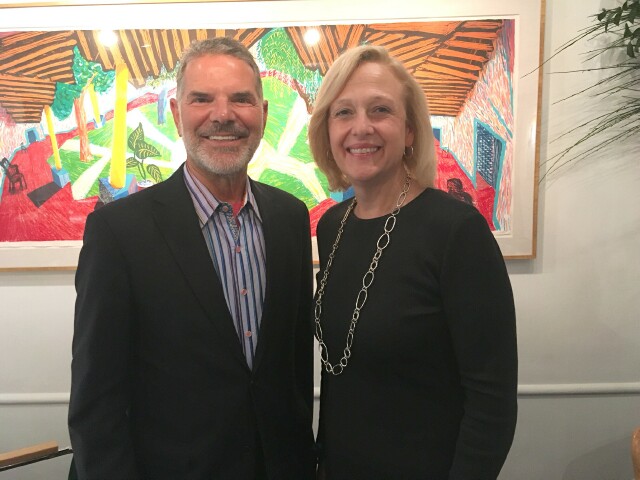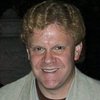Lunch at Michael’s with Paula Kerger, President and CEO of PBS

Next month millions of Americans are going to feel acute withdrawal pains -- as it will be the first post-holiday season in six years in which PBS will not offer a new season of Downton Abbey on Masterpiece, and starting a new year off without the Granthams and the Crawleys just doesn’t seem right. “Critics always gave us such a hard time about Downton, even to the end, saying that we should move it into the fall, without really understanding the rhythm of the post-holiday schedule,” PBS President and CEO Paula Kerger told Jack Myers and me over a recent lunch at Michael’s restaurant. "Downton would have done well wherever it landed, but it did exceptionally well because of the fact that it was right after the holidays. It’s cold and dark and people are in more.” Now, with Downton in the rear-view mirror, Paula told us that the upcoming series about Queen Victoria, titled Victoria and set to debut in January on Masterpiece, should help comfort those longing for mid-winter period drama.
Throughout its run, Downton – in tandem with Sherlock – certainly regenerated interest in PBS among young adult viewers. So did the company’s embrace of digital technology, including YouTube, now home to a slate of some of its most successful original PBS programming for the web. Together, the phenomena of these shows, both multiple Emmy winners, and the migration into new platforms has gone a long way toward making Paula’s ten years at the helm of the Public Broadcasting Service especially rewarding, particularly during a decade of perpetual sweeping change for everyone in media. Throughout that time Paula has become the longest-running president of PBS in the company’s history. “And I’m still standing!” she laughed.
“Running a media organization right now is complicated, as you try to figure out where the audiences are going to,” Paula said. “When you run organizations like NPR or PBS, which are federated systems, you have the additional challenge but also the opportunity of figuring out how to work with very independent, locally grounded media companies.
“I’m especially proud of the relationships we’ve built with the stations,” she continued. “We’re navigating through a period of great change in a way that continues to have us really trying to envision the future. We may have different ideas but I think we kept it glued together.”
Constant contact with PBS’ 350 member stations has been and continues to be at the forefront of Paula’s responsibilities. “I spend a lot of time on the road visiting [them],” she said. “I think it’s really important if you are doing this kind of job. We have a number of annual meetings and other meetings where people come together, but it’s very different when you see someone in their home. I go to the stations and walk around, meet the whole range of people -- the boards and the volunteers. It helps to understand the stations and also it’s a show of respect. I don’t think I could do my job if I didn’t spend time on the road really trying to understand what people are grappling with.
“As we’ve looked at this continually shifting media landscape we’ve encouraged our stations to aggressively use the PBS brand,” Paula continued. “I think a lot about the brand. It’s our biggest asset. We do research every year that ranks us as extraordinarily trusted against other media organizations and public institutions. The authenticity of the content is truly valuable and that’s what resonates with people.
“With a lot of the places where we’re distributing content, such as Roku and Apple, our content sits under the PBS brand,” she continued. “What we’ve tried to do as technology has evolved is utilize the ability to do auto-localization. It enables us to create an experience that takes advantage of the brand but also connects it to a local experience, which I think for us is unique. We’re really focused as we look forward at ways to continue to meet people where they are and to do it around brands that have the same attributes ours has. It’s harder for the networks and for brands like ours that mean many different things to many different people. I do think that we sit differently from the other networks, that there is a power to the brand that draws people.”
Paula believes this, she explained, because of meetings PBS had at YouTube a few years back when it decided to move into that space. “We saw a lot of people working there that, had it been 10 years earlier, would have been working for us somehow,” she recalled. “They were doing content that is smart and educational but also entertaining. We decided YouTube was appealing to us because of the audience.” When they realized that a lot of kids, teens and younger adults were watching YouTube, they decided it would be “a place for us to begin building out a presence. Not to take advantage of some of the attributes of YouTube felt to us like a miss.”
Embracing YouTube and new technologies led to the creation of PBS Digital Studios. “I was surprised how many people, even people who had established brands on YouTube, suddenly wanted to work with us,” Paula said. “There are people that are working for us at Digital Studios who I’m sure aspire [to have] their work [become] television shows -- but most of them don’t.”
Paula revealed that one of her favorite series from Digital Studios is Blank on Blank, which takes old radio recordings and animates them in videos that typically run six to nine minutes. “It is a perfect YouTube project that would never be a television project,” she said.
Overseeing the entirety of national public television PBS through the digital era couldn’t be farther from the life Paula knew as a child growing up in a rural area outside of Baltimore. She lived “in a house that was built by my parents on a piece of property that my grandparents had given to them when they got married,” she recalled. “My grandfather was a professor and during the Depression he bought this property because he thought that if things got really bad, if they lived in the country at least they would eat. They would have the garden.”
Living in the country gave her a “loud voice,” Paula said, explaining that as a child she had been shy with a “little voice,” but that mysteriously changed. “It must have come from calling the dogs or something,” she laughed -- or from cheering for the Baltimore Orioles. “When I was a little girl I was a Junior Oriole,” she said. “I used to sit out in left field with my glove at the old Memorial Stadium, waiting for the ball that never came.” Junior Orioles, she explained, were lucky kids given tickets to sit in the bleachers “in the hot sun” and cheer for the home team.
Paula attended the University of Maryland with the intention of becoming a veterinarian. “I was pragmatic even at that time because I realized that veterinary school was going to be difficult to get into so I actually started in pre-med,” she recalled, adding that she “crashed and burned during organic chemistry.” She took solace in humanities classes “before I panicked and realized that I was never going to be gainfully employed,” so she switched schools and pursued a business degree at the University of Baltimore. “I graduated without a clue what I wanted to do in life,” she added.
After going on “a lot” of interviews, Paula ended up working for UNICEF in Washington, D.C. It was mostly fundraising work, which would serve her well in the future. “I was in that job two years when they moved me to New York, to the national office,” she said. “I had landed in a fundraising job with no idea that it was even a career.”
A position at the Rockefeller-founded organization International House followed. Then a headhunter representing the Metropolitan Opera called to see if she would bring her fundraising skills there. The Met proved to be a great fit. “I love music,” Paula said. “My grandfather was the founder of the public radio station in Baltimore, which was a classical music station with a little bit of NPR. I went on the interview and said I was probably the wrong person for them to hire because I knew nothing about opera. They said they didn’t want someone who was passionate about opera because that person would be more interested in hanging out by the stage door than in raising money. So they hired me.”
Her time at the Met was followed by a move to WNET Channel 13 in New York, where she spent 13 years, initially as Vice President of Development and then rising to the position of COO. Henry Kravis was the board chair at the time of her interview. “Channel 13 was basically spending every dollar they brought in,” Paula recalled. “The year before I got there New York State had enacted a significant budget cut and WNET had to lay off a lot of people. Henry pointed out that every major non-profit organization has an endowment to provide economic stability. So that’s what I developed for them and then moved into a larger operational role. The move to PBS followed in 2006.
When she isn’t busy traveling around the country visiting stations and overseeing programming and technology initiatives for PBS, Paula enjoys spending time with her husband at the home they purchased two years ago in the Blue Ridge Mountains. “The thing that is the through-line from when I was six is that I love being outside,” she told us. “We’re in a place where we can hike and do outdoor things.” She is also Chairman of the Board of the Museum of Natural History in Washington. “Even though I flunked organic chemistry I’m still very interested in art and science,” she laughed. “That’s so much of who my grandfather was. He started the radio station because he was interested in art and science. He was a physics professor and his area of expertise was microwave technology. He was teaching electronics in Baltimore and he built the station as a real-world example. He did it for the science but he was also heavily involved in theater. I think I must have some of his passions. I’ve always been interested in the arts but I have no talent in any artistic endeavor at all. At least I admit it!”
Reflecting on her past accomplishments and the challenges that lie ahead, Paula concluded, “This is the most interesting of times in media. I’ve met some of the people that put our stations on the air who have been in public media since the very beginning, back when people just did wild stuff because you could. The industry evolved and it became harder to do wilder stuff because everybody was watching. But now we’re in that place again. People are trying new and different things. I don’t think it’s for the faint of heart. If you feel like you have to have everything mapped out you’re in the wrong business, because sometimes the shifts are just gut-wrenching.”
Click the social buttons above or below to share this content with your friends and colleagues.
The opinions and points of view expressed in this article are exclusively the views of the author and/or subject(s) and do not necessarily represent the views of MediaVillage.com/MyersBizNet, Inc. management or associated bloggers.


